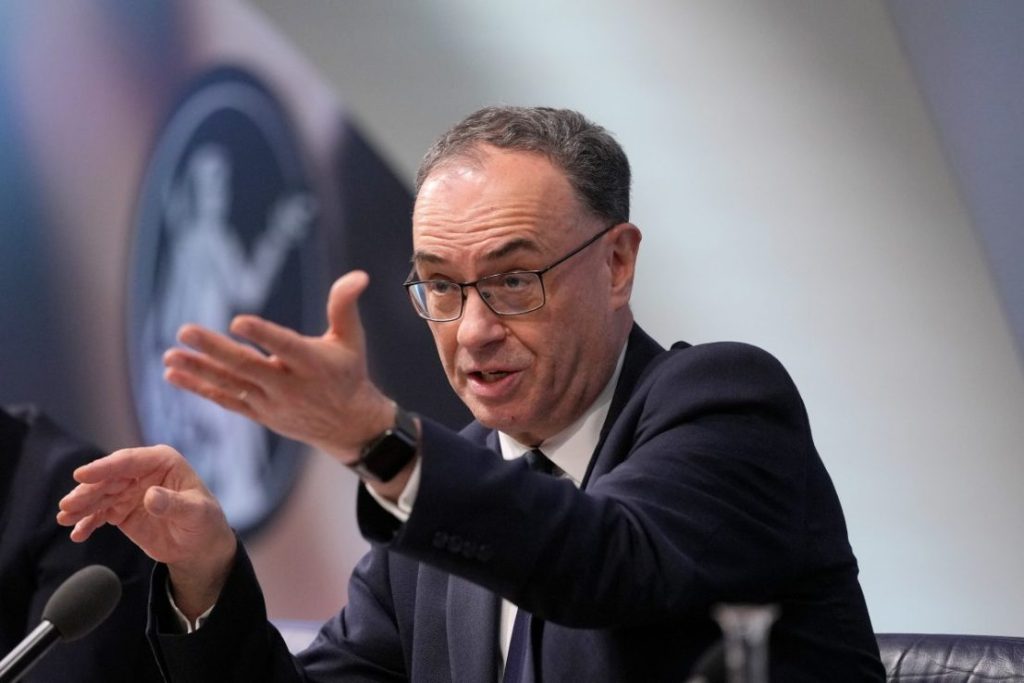Economic indicators and geopolitical turbulence have set the stage for Thursday’s Monetary Policy Committee (MPC) meeting, where markets widely expect the Bank of England to keep its Bank Rate unchanged at 4.25%. After a sequence of rate cuts since last August—from a peak of 5.25%—the central bank faces new data that could complicate its path forward.
MPC’s Recent Rate Path
Since August, the MPC has voted to lower borrowing costs at every other meeting, easing the peak rate from 5.25% down to 4.25%. This alternating approach allowed policymakers to gauge the impact of each cut on inflation and growth. With UK consumer prices steadily falling from the highs of 2023, the Committee had room to reduce rates without risking a resurgence of inflation.
Surprise Uptick in April Inflation
However, the Office for National Statistics (ONS) reported a sudden rise in Consumer Prices Index (CPI) inflation to 3.5% in April, up from 2.6% in March. Although the ONS later corrected the figure to 3.4% due to a vehicle tax data error, the upward revision underscores persistent cost pressures. April’s reading marks the highest 12-month rate in over a year, forcing the Bank to weigh whether to pause its easing cycle.
Policymakers Emphasize a “Nimble” Response
Ellie Henderson, economist at Investec, argues the BoE’s policy stance “remains well placed to allow a wait-and-see approach,” noting that inflation and the international backdrop remain unpredictable. She adds that “this is a highly uncertain time requiring a potentially nimble response” from central banks, suggesting future decisions could pivot swiftly if fresh economic shocks emerge.
Geopolitical Shocks Fuel Volatility
Friday saw oil prices spike after Israel’s strikes on Iran’s nuclear sites, stirring fears of supply disruptions in the Middle East. Heightened conflict risks can quickly translate into higher pump prices and feed into UK inflation—factors the MPC must monitor closely. Meanwhile, threatened U.S. tariffs under President Trump have dampened global business confidence and hit exports, adding to the complex external pressures facing UK firms.
Labour Market Softness Offers Room
New official data for the three months to April revealed wage growth slowed sharply, while unemployment ticked higher. Pantheon Macroeconomics economists Rob Wood and Elliott Jordan-Doak suggest a weaker jobs market will reassure the MPC that it can proceed with further rate cuts. Yet they caution that “one month’s data is far from enough to abandon our ‘gradual and careful’ easing strategy,” emphasizing the importance of consistent trends over isolated figures.
BoE Chief Economist’s Caution
Huw Pill, the Bank’s chief economist and MPC member, last month admitted he thought previous cuts may have been too rapid, warning that “stubbornly strong” pay growth could keep inflation elevated. His stance highlights an internal split: balancing the need to support growth and the risk of loosening policy too quickly in the face of wage-driven inflationary pressures.
Global Central Banks on Hold
Coinciding with the BoE meeting, the U.S. Federal Reserve is widely expected to hold its rates steady. This synchrony reflects central banks’ preference for pausing rate moves to assess the impact of prior adjustments, while monitoring inflation, growth, and financial stability risks in a volatile global environment.
Market Expectations and Forward Guidance
Investors currently price in a roughly 30% chance of a further BoE cut by November, but a 70% probability that rates remain at 4.25% in June. The MPC’s forward guidance will be crucial: any hint at later cuts could strengthen sterling, while cautionary language might weaken it. Analysts will dissect every word of Governor Bailey’s statement for clues on the Committee’s next move.
Risks to the Outlook
- Inflation rebounds from food or energy shocks could delay any further rate cuts.
- Fiscal policy shifts in the UK or abroad may alter growth trajectories.
- Consumer spending and retail data in the coming weeks will test household resilience.
The BoE must navigate these risks while ensuring financial markets remain stable and inflation continues its downward path toward the 2% target.
Next Data Releases to Watch
Traders and policymakers alike will observe Wednesday’s CPI inflation data for May, which will provide fresh insight into price pressures. Retail sales figures and business sentiment surveys scheduled later in the week will further inform the MPC’s view of economic momentum ahead of its decision.
